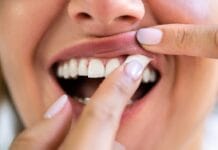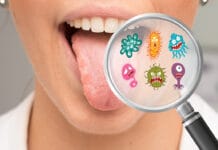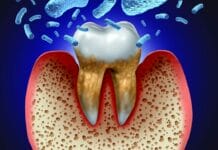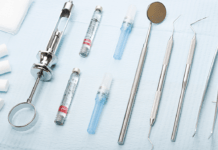Gluten-free diets are often necessary to manage gluten-related disorders such as gluten intolerance and celiac disease. However, more and more individuals not affected by these conditions are adopting a gluten-free diet.
Gluten-free diets are popular among some wellness communities, but what do we really know about gluten-free diets, especially when utilized in the absence of a gluten-related disorder?
What is Gluten?
Gluten is a protein found in wheat, rye, barley, and triticale. It is essentially the glue that holds food together.1 Gluten is the protein that initiates an autoimmune response in individuals with celiac disease. When someone with celiac disease consumes gluten, the host mounts an immune response that attacks the small intestines. These attacks damage the villi. After multiple attacks, the villi become compromised, and nutrients cannot be adequately absorbed by the body.2
There are reasons to adhere to a gluten-free diet. However, in the absence of gluten-related disorders, the benefits of adhering to a gluten-free diet are scarce, yet the risks are concerning.
Gut Microbiome and Gluten-Free Diet
A gluten-free diet is the only option to manage gluten-related disorders and is quite successful in their management. Many healthy individuals have adopted the diet on the premise that it improves health and is helpful in weight management and weight loss. However, the idea that a gluten-free diet is “healthier” than the individual’s habitual diet is highly controversial.3
Studies indicate individuals on a gluten-free diet have a decline in protective gut microbes like Enterococcus, coupled with an increase in potentially pathogenic strains including Bacteroides, Salmonella, Shigella, Klebsiella, and members of the Enterobacteriaceae family. These shifts may exacerbate gut inflammation.4
Multiple studies suggest that a gluten-free diet can induce alterations in the gut microbiota, potentially posing health risks.4
Oral Health and Gluten-Free Diet
On average, gluten-free products contain more carbohydrates, fat, and sugar and have less dietary fiber than regular products.5 The purpose of adding more sugar to gluten-free foods is to help make them more palatable.6
It is important to understand the nutritional values of many gluten-free products, as increased sugar intake is a causal factor in dental caries and periodontal disease, as well as multiple systemic diseases. As a result, patients who have adopted a gluten-free diet due to a gluten-related disorder or as a lifestyle choice may be at a higher risk of developing dental caries and/or periodontal disease.7,8
One study established that every five grams of sugar (one teaspoon) consumed increased the risk of dental caries by 1%. Though that may seem like a small increase in percentage, we have to consider other factors associated with dental caries risk as well. Additionally, the more sugar consumed via gluten-free products, the higher the caries risk becomes.7
An increase in added sugar intake > 10% is associated with an increased incidence of periodontal disease. Additionally, the World Health Organization has established that a sugar intake of > 10% is associated with multiple systemic diseases.8,9
Moreover, higher sugar intake alters the oral microbiome. Multiple bacterial genera or species, such as Streptococcus, Scardovia, Veillonella, Rothia, Actinomyces, and Lactobacillus, were noted to increase in abundance, with a higher sugar intake. These bacteria are all associated with higher caries risk.10
Therefore, the hidden increase in sugar and carbohydrate intake from gluten-free products could increase the risk of developing dental caries and/or periodontal disease, as well as other systemic diseases.
Other Factors to Consider
In addition to the increased risk of dental caries and periodontal disease and the increased risk of altering the gut microbiome, there are other concerns associated with adopting a non-medically necessary gluten-free diet. This includes psychological manipulation through emotive language, increased cost, and increased exposure to toxic substances.
Emotive Marketing Language is Deceiving
A huge factor in fad diets is the emotive language used for marketing. This has been shown to be true regarding the controversial and unfounded health benefits of gluten-free diets adopted by individuals who do not suffer from gluten-related disorders.5
Phrases such as “food for health-conscious people” and “all-natural ingredients” are emotionally driven statements that may seem enticing to those seeking a healthy lifestyle. Therefore, this type of marketing targets consumers that do not require gluten-free products.5
This phenomenon is not isolated to gluten-free products. Food language has been a trending topic among registered dieticians for some time. The concern regarding food language and nutrition boils down to the fact that language influences our emotions, and our emotions drive decision-making. This cycle leads to decisions based on emotion rather than evidence and causes many well-intentioned individuals to fall prey to good marketing with no proven influence on health.11,12
Gluten-Free Diet is More Costly
Gluten-free products are often more costly and provide little to no benefit for healthy individuals. One study found that gluten-free products were 242% more expensive than regular products.13 This is unfortunate for those who are required to adhere to a gluten-free diet. However, if you don’t have a condition that requires a gluten-free diet, you may be spending more at the grocery store than is necessary.
Gluten-Free Products Might Increase Arsenic Exposure
I want to preface this section with the fact that not all arsenic exposure will be problematic. I know the idea of ingesting arsenic may sound concerning, but we are all exposed to a certain level of arsenic in our foods and water with no ill effects. There are two types of arsenic: organic and inorganic. Organic arsenic is less harmful to health, while inorganic arsenic poses more concern to human health.14,15
Understanding the difference between organic and inorganic arsenic is important when considering a gluten-free diet, as rice poses the biggest risk to inorganic arsenic in the human diet. Many gluten-free products are made with rice flour, which inadvertently increases the exposure to arsenic when these products are consumed as a replacement for regular products.15,16
If you have been diagnosed with a gluten-related disorder and are concerned about arsenic exposure, there are options. Products made with almond flour, flaxseed flour, coconut flour, and oat flour would reduce arsenic exposure.17,18
I was generally hesitant to add this to the list of reasons not to adopt a gluten-free diet if it isn’t medically necessary because I did not want it to be misinterpreted to mean everyone should avoid eating rice. In no way is that what I am implying. I am simply highlighting the fact that you could be increasing your exposure to inorganic arsenic without realizing it.
The Food and Drug Administration (FDA) and Environmental Protection Agency (EPA) have set regulations for arsenic levels in drinking water at 10 parts per billion (ppb). Products are closely monitored to ensure they do not have excessive levels of arsenic. Nonetheless, more frequent consumption will increase exposure.19
In Conclusion
Though research is limited on the effects of a gluten-free diet in the absence of a gluten-related disorder, the evidence we have indicates it does not provide a healthier alternative to habitual diets. Unless medically necessary, elimination diets are not the best choice for healthy individuals. A healthy diet is a well-balanced diet with proper macro and micronutrients.
Concerns regarding increased carbohydrate, fat, and sugar consumption play a role in oral health and should not be dismissed. Dental professionals should consider educating their patients that gluten-free products may increase the risk of dental caries and periodontal disease due to increased carbohydrates, fat, and sugars.
While nutritional counseling is an important part of preventive care, dental hygienists should stop short of recommending a specific diet, such as a gluten-free diet. Rather, if a patient has a suspected gluten-related disorder, patients should be referred to and evaluated by their primary care physician and possibly have a consultation with a registered dietician for nutritional guidance.
Before you leave, check out the Today’s RDH self-study CE courses. All courses are peer-reviewed and non-sponsored to focus solely on high-quality education. Click here now.
Listen to the Today’s RDH Dental Hygiene Podcast Below:
References
- What is Gluten? (n.d.). Celiac Disease Foundation. https://celiac.org/gluten-free-living/what-is-gluten/
- What is Celiac Disease? (n.d.). Celiac Disease Foundation. https://celiac.org/about-celiac-disease/what-is-celiac-disease/
- Garcia-Mazcorro, J.F., Noratto, G., Remes-Troche, J.M. The Effect of Gluten-Free Diet on Health and the Gut Microbiota Cannot be Extrapolated From One Population to Others. Nutrients. 2018; 10(10): 1421. https://www.ncbi.nlm.nih.gov/pmc/articles/PMC6212913/
- Reddel, S., Putignani, L., Del Chierico, F. The Impact of Low-FODMAPs, Gluten-Free, and Ketogenic Diets on Gut Microbiota Modulation in Pathological Conditions. Nutrients. 2019; 11(2): 373. https://www.ncbi.nlm.nih.gov/pmc/articles/PMC6413021/
- Rothburn, N., Fairchild, R.M., Morgan, M.Z. Gluten-Free Foods: A ‘Health Halo’ too Far for Oral Health? Br Dent J. Published online July 19, 2022. https://www.nature.com/articles/s41415-022-4424-2
- Roland, J. (2018, September 29). Diabetes and Gluten: What You Need to Know. Healthline. https://www.healthline.com/health/diabetes-and-gluten
- Moynihan, P. Sugars and Dental Caries: Evidence for Setting a Recommended Threshold for Intake. Adv Nutr. 2016; 7(1): 149-156. https://www.ncbi.nlm.nih.gov/pmc/articles/PMC4717883/
- Moreira, A.R.O., Batista, R.F.L., Ladeira, L.L.C., et al. Higher Sugar Intake Is Associated With Periodontal Disease in Adolescents. Clin Oral Investig. 2021; 25(3): 983-991. https://pubmed.ncbi.nlm.nih.gov/32519237/
- WHO Calls on Countries to Reduce Sugar Intake Among Adults and Children. (2015, March 4). World Health Organization. https://www.who.int/news/item/04-03-2015-who-calls-on-countries-to-reduce-sugars-intake-among-adults-and-children
- Angarita-Díaz, M.D.P., Fong, C., Bedoya-Correa, C.M., Cabrera-Arango, C.L. Does High Sugar Intake Really Alter the Oral Microbiota?: A Systematic Review. Clin Exp Dent Res. 2022; 8(6): 1376-1390. https://www.ncbi.nlm.nih.gov/pmc/articles/PMC9760141/
- Lindquist, K.A., MacCormack, J.K., Shablack, H. The Role of Language in Emotion: Predictions From Psychological Constructionism. Front Psychol. 2015; 6: 444. https://www.ncbi.nlm.nih.gov/pmc/articles/PMC4396134/
- Ratson, M. (2023, August 7). The Power of Emotions in Decision Making. Psychology Today. https://www.psychologytoday.com/us/blog/the-wisdom-of-anger/202308/the-power-of-emotions-in-decision-making
- Stevens, L., Rashid, M. Gluten-Free and Regular Foods: A Cost Comparison. Canadian Journal of Dietetic Practice and Research. 2008; 69(3): 147-150. https://doi.org/10.3148/69.3.2008.147
- Arsenic. (2022, December 7). World Health Organization. https://www.who.int/news-room/fact-sheets/detail/arsenic
- Arnarson, A. (2017, June 4). Arsenic in Rice: Should You Be Concerned? Healthline https://www.healthline.com/nutrition/arsenic-in-rice
- Park, J., Kim, H.S. Rice-Based Gluten-Free Foods and Technologies: A Review. Foods. 2023; 12(22): 4110. https://www.ncbi.nlm.nih.gov/pmc/articles/PMC10670158/
- Richards, L. (2021, June 23). What to Substitute for Almond Flour. Medical News Today. https://www.medicalnewstoday.com/articles/almond-flour-substitute
- Gluten-Free Foods that Taste Good. (2014, November 21). Consumer Reports. https://www.consumerreports.org/cro/news/2014/11/gluten-free-foods-that-taste-good/index.htm
- Arsenic in Food. (2024, March 5). U.S. Food and Drug Administration. https://www.fda.gov/food/environmental-contaminants-food/arsenic-food











